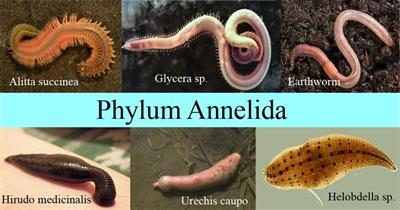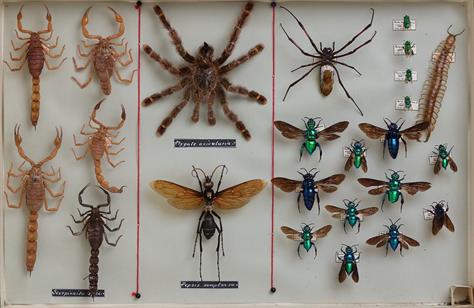PDF chapter test TRY NOW
Annelida:
These are animals that are found in freshwater and marine water. They are bilaterally symmetrical and triploblastic animals with a true body cavity. Hence, they have definite organs with an extensive organ differentiation -organ system level of organisation. The body of these organisms is differentiated in a segmented fashion from head to tail.
They also have a closed circulatory system—their locomotory structures known as parapodia for their locomotion.

Clockwise from left to right: Earthworms, leeches, Neries
Arthropoda:
The phylum Arthropoda consists of the largest group of animals. These animals are bilaterally symmetrical and triploblastic with a true body cavity (coelomates). They have an organ-system level of classification as they have definite organs.
Other characteristics:
- They have an open circulatory system as their blood does not flow in blood vessels.s
- Their coelomic cavity is blood-filled.
- They have jointed legs. Hence, they are known as arthropods as the term arthropod means jointed legs.

Clocwise from top left: Prawn, crab, housefly, spider, butterfly, scorpion, millipede
Reference:
https://upload.wikimedia.org/wikipedia/commons/a/a1/Phylum-Annelida-Diagram.jpg
https://www.flickr.com/photos/nmbeinvertebrata/45902849942/in/photostream/
